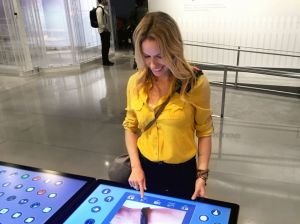Brand Audits’ Update x Christine Moody*

One of the key elements of the brand audit process is to understand and map out the customer journey and every ‘touch point’ the customer has with the organisation. And I mean EVERY TOUCH POINT—from the greeting at reception to the invoice layout. It is also important to understand the organisation’s language and policies that affect the customers ie, the tone and attitude of the accounts staff collecting overdue monies should have the same attention as training of the sales team. I have conducted many brand audits over the years during audits, and there is one thing that is common in all to all of them. Most organisations think it is all about the product or service they are offering. But what I know is that while the customers are really happy with the actual product or service, it is holistic view of the customer—from initial contact with the organisation to the after sales service. Sometimes it can be just too difficult and complicated for the customers.
But it is becoming more important to leave customer service to a few key people in your organisation. In a Customers 2020 report it was predicted that by 2020, customer experience will overtake price and product as the key brand differentiator so let’s not wait til 2020. To show organisations what good customer services look like show them examples of brands outside their industry for example the travel or retail industries. These benchmark brands are selected because they ensure that every detail aligns with their brand strategy and they visualise this through every single touch point ie, Ritz-Carlton.
In a Customers 2020 report it was predicted that by 2020, customer experience will overtake price and product as the key brand differentiator so let’s not wait til 2020.
The Ritz-Carlton is so famous for it is teaching other industry sectors outside of hospitality and travel ie, finance. Launched in 2000, The Ritz-Carlton Leadership Center offers various educational programs at select properties around the country for executive training in leadership, customer service, employee engagement, and company culture.
Hospitality—The Ritz-Carlton
Ritz-Carlton has become a leading brand in luxury lodging by rigorously adhering to its own standards. It is the only service company in America that has won the Malcolm Baldridge National Quality Award twice, and Training Magazine has called it the best company in the nation for employee training. Its unique culture starts with a motto: “We are ladies and gentlemen serving ladies and gentlemen.” One of its remarkable policies is to permit every employee to spend up to $2,000 making any single guest satisfied. Ritz-Carlton codifies its expectations regarding service in “The 12 Service Values,” “The Credo,” “The Three Steps of Service,” “The 6th Diamond” and other proprietary statements that are taught to all 38,000 employees throughout 73 properties in 24 countries. Simon Cooper, who has led Ritz-Carlton for the past eight years, talks about what makes Ritz-Carlton, well, the Ritz.
Read more: How the Ritz-Carlton stays at the top
So let’s not wait until 2020 to develop standards for customer service to create an amazing customer experience in our organisations!
*Christine Moody is one of Australia’s leading brand strategists and the founder brand management consultancy, Brand Audits. With more than 30 years’ professional experience, Christine has helped a diverse client base of local and international brands, including Gold Coast City Council, Hilton Hotels, and Wrigleys USA, to develop, protect and achieve brand differentiation.
For more information: chris.moody@brandaudits.com.au or +61 419 888 468.










